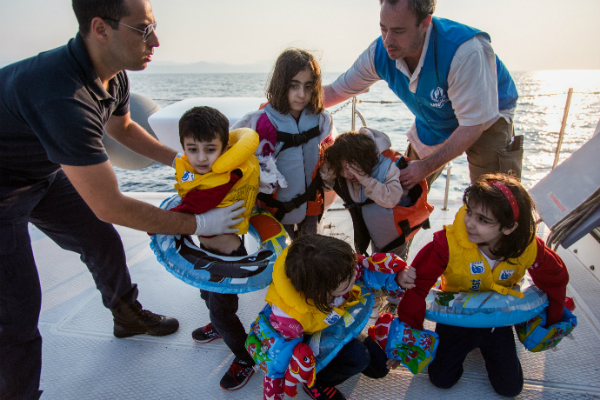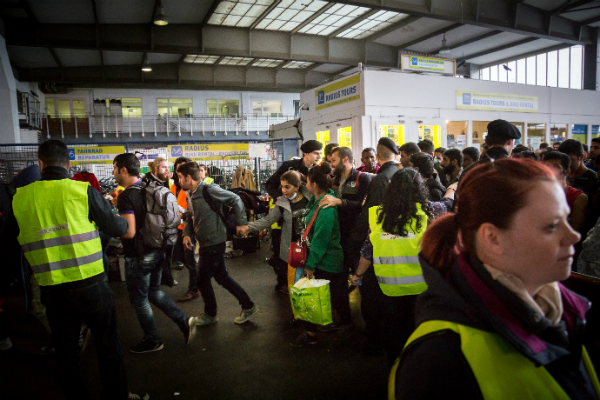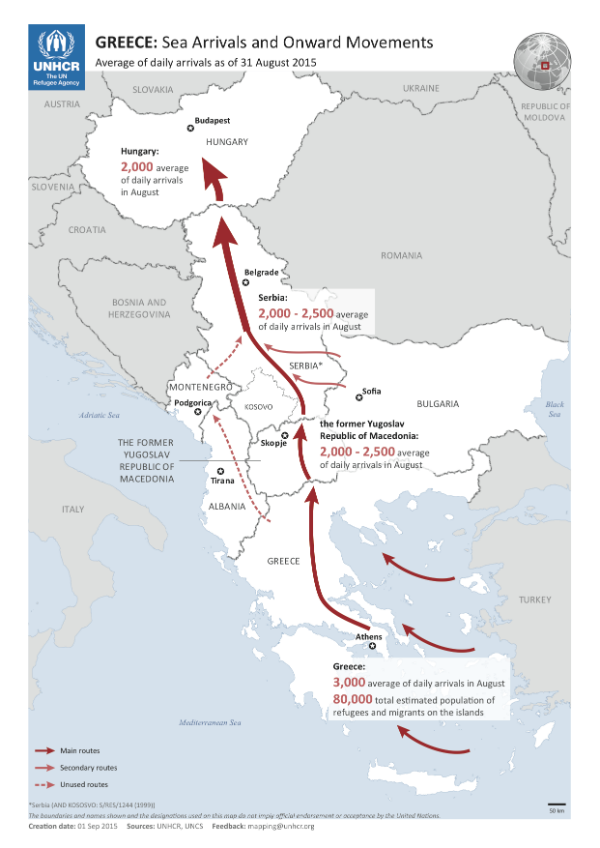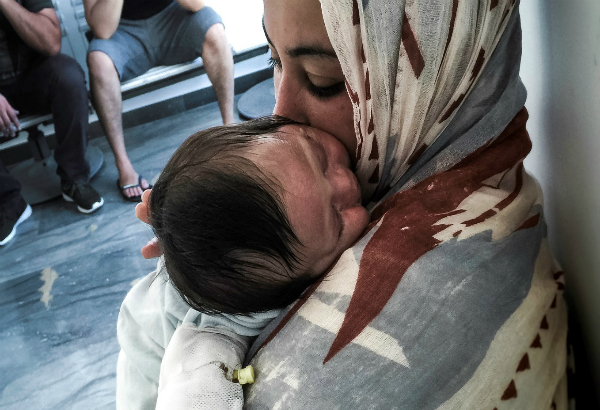What can Filipinos do about the refugee crisis in Europe?
MANILA, Philippines – More than 2,800 people have died or gone missing at sea this year as refugees and migrants from Syria and other countries in conflict such as Afghanistan, Iraq, and Eritrea took the dangerous escape to Europe to seek shelter, protection, and a new and better life, according to a report from the United Nations High Commissioner on Refugees (UNHCR).
Story after story about the crisis continues to make headlines. Most recently, a photo of a lifeless Syrian toddler that had been washed ashore went viral, disturbing the hearts and minds of many.
READ: #HumanityWashedAshore: Artists mourn Syrian boy's death through gut-wrenching artworks
“I saw the worst and best of the human experience side by side,” said George Woods, an officer for UNHCR, regarding his experiences during emergency operations in Greece.
“On one hand, there were dreamlike beaches of Lesvos with tourists taking a swim and drinking exotic drinks while, on the other, an Afghan family of about ten people were squeezed into a ten-square meter container. The family included a pregnant woman, children, and an elderly man who kept pointing to his throat and trying to utter the word ‘water’. Worse still were young Syrians who were trying to come into the same container because there wasn’t enough space in their own. Many had walked several kilometers and had bleeding blisters on their feet. I also met local Greek families who, despite their own economic hardships, were so moved by the desperation of these refugee families that they were organizing food and water collection and distribution in their spare time.”
‘No country can refuse’
The latest count indicates that there have been more than 320,000 refugee arrivals by sea this year, and the numbers continue to rise. Thousands did not make it to the end of their journey due to severe starvation, shipwreck, dehydration or illness.
Majority of the arrivals come to Greece and Italy, but the movement of people has now also spread to the former Yugoslav Republic of Macedonia, Serbia, Hungary, Austria, Germany, and the Nordic countries.
 A UNHCR worker and a member of Greece's Hellenic Coast Guard rescue young Syrian refugees from an inflatable raft in the Mediterranean sea, off the coast of Lesbos, Greece. © UNHCR/Andrew McConnell
A UNHCR worker and a member of Greece's Hellenic Coast Guard rescue young Syrian refugees from an inflatable raft in the Mediterranean sea, off the coast of Lesbos, Greece. © UNHCR/Andrew McConnell Syrian refugees reach Munich, Germany with trains from Austria. Munich locals brought bags of donations, and many more cheered and welcomed the refugees who have finally arrived in safety. © UNHCR/Gordon Welters
Syrian refugees reach Munich, Germany with trains from Austria. Munich locals brought bags of donations, and many more cheered and welcomed the refugees who have finally arrived in safety. © UNHCR/Gordon Welters

The report notes that years of conflict at home and difficult conditions in neighboring countries have left many refugee families feeling forced to take the perilous journey to Europe to survive. Over 60 percent of those fleeing by sea are women and children.
UNHCR has also been seeing an increase in the numbers of unaccompanied children. Many begin the journey with a parent or family member but find themselves bereaved and alone. Babies, young children, and the elderly are among the most vulnerable groups, and many suffer from malnutrition, heat exhaustion, and sickness.
The problem, however, is that accepting countries lack resources to support the vast number of refugees arriving at their shores as the rate of arrivals overwhelms local government and infrastructure throughout Europe.
Antonio Gutteres, head of UNHCR, said in a recent statement that Europe cannot keep on responding to the refugee crisis it is facing now with a “piecemeal or incremental approach.”
“No country can do it alone, and no country can refuse to do its part,” he added.
Call for support
UNHCR has been at the forefront of the life-saving efforts provided to the refugees since the crisis began. But it is calling out to other countries, including the Philippines, for support as this crisis continues and the refugees’ needs rise.
 Ali, just 40 days old and with Down’s Syndrome, was found sunburnt and suffering from pneumonia after he and his parents were rescued when their overcrowded fishing boat capsized en route from Libya to Italy. A single life jacket and a piece of wood was their lifeline. ©UNHCR/Federico Schlatter
Ali, just 40 days old and with Down’s Syndrome, was found sunburnt and suffering from pneumonia after he and his parents were rescued when their overcrowded fishing boat capsized en route from Libya to Italy. A single life jacket and a piece of wood was their lifeline. ©UNHCR/Federico SchlatterUNHCR has deployed staff to the key regions and their borders to provide assistance in areas such as registration, post-rescue care, and specialist support for vulnerable groups. Together with its partners, the agency also distributes core relief items like food, water, sleeping mats, and thermal blankets.
Although it has always been quick to respond with emergency operations on the ground, UNHCR has also always struggled to meet the amount of resources required to provide sufficient help to millions of refugees and to those who are not able to leave their homes in countries of conflict and are struggling to survive.
How Filipinos can help
Recently, UNHCR lauded the Government of the Philippines’s willingness to take in Rohingya refugees who were also fleeing by boat. On an annual average, 85-120 people come to the Philippines to seek safe haven from persecution and war from some 22 countries. As a signatory to the 1951 Convention relating to the status of refugees, and its 1964 Protocol, the Philippines honors its mandate of providing humanitarian relief and protection to people fleeing conflict in their countries.
Filipinos can show their solidarity with the global community in addressing what UNHCR has called “the largest humanitarian tragedy of our era” by helping raise awareness and supporting non-government organizations and charities currently providing critical aid to refugees.
The public is invited to visit UNHCR booths in malls and other event sites or go online at https://donate.unhcr.ph/syria to support UNHCR’s ongoing emergency operations in the region.
You can certainly be part of the solution to this crisis, to help save lives of families forced to flee.
Watch the inspiring video below to see how the power of action from civil society and ordinary citizens in countries such as Austria and Germany have affected refugees.

Filipinos helping refugees: A noble tradition, a way to give back
On World Humanitarian Day, UNHCR invites Filipinos to be "Messengers of Humanity"
- Latest

























